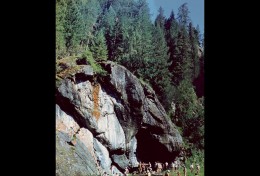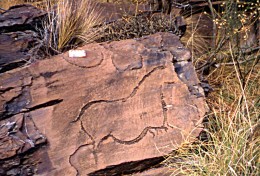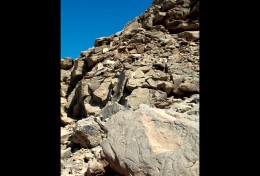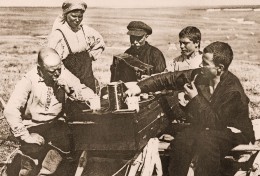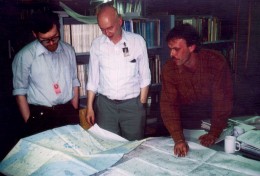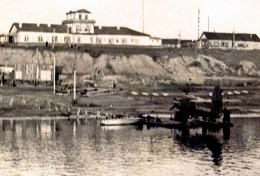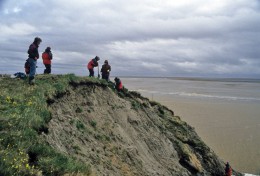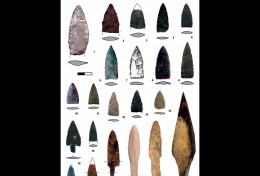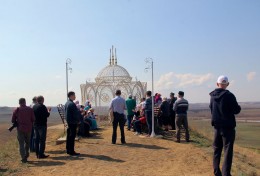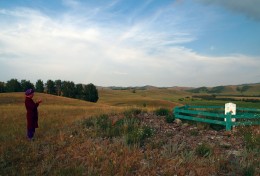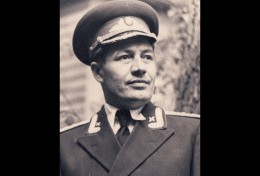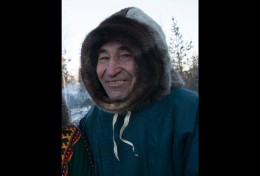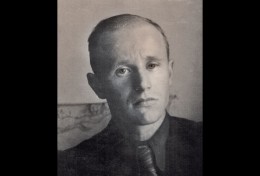| Библиографический список |
1. Dobrzanska H. Sarmatians -people from Central Eurasian steppes -on their most western territory//Serica -DaQin. Over 2000 years of Sino-Western relations. Studies in Archaeology, Philology and History. Wroclaw (forthcoming).
2. Paroń A. The nomadic state of early Medieval Europe on the Background of the Eurasian steppes` political structures. An essay//Potestas et communitas. Wroclaw; Warszawa, 2010. P. 163-180.
3. Szmoniewski B. Sz. Stronghold at Pastirs`ke -centre of power in the forest-steppe belt of eastern Europe//Potestas et communitas. Wroclaw; Warszawa, 2010.
4. Шмониевский Б. Ш., Воина В. М. Погребение тюркского кочевника в пещере Баба в северной Добрудже: свидетельство присутствия печенегов в регионе//История и культура средневековых народов степной Евразии. Барнаул, 2012. С. 150-152.
5. Таиров А. Д. Кочевники урало-казахстанских степей в VII-VI вв. до н. э. Челябинск, 2007.
6. Корякова Л. Н., Шарапова С. В., Ковригин А. А. Прыговский 2 могильник: кочевники и лесостепь//Урал. ист. вестн. 2010. № 2 (27).
7. Перерва Е. В. Палеопатология поздних сарматов из могильников Есауловского Аксая//OPUS: Междисциплинарные исследования в археологии. 2002. Вып. 1-2. С. 141-151.
8. Ražev D., Šarapova S. Warfare or Social Power: Bioarchaeological Study of the Iron Age Forest-Steppe Populations in the Trans-Urals and Western Siberia//Praehistorische zeitschrift. 2012. 87(1). P. 146-160.
9. Тишков В. А. Реквием по этносу. М., 2003.
10. Шарапова С. В. Маркеры социальной идентичности: биоархеологический аспект//Человек и Север: Антропология, археология и экология: материалы всерос. конф. Тюмень, 2012. Вып. 2. С. 65-68.
11. Sharapova S. Beyond the Silk Road: cultural identity of the Iron Age forest-steppe population of the Trans-Urals and Western Siberia//Serica -Da Qin. Over 2000 years of Sino-Western relations. Studies in Archaeology, Philology and History. Wroclaw (forthcoming).
12. Кузьмина Е. Е. Предыстория Великого шелкового пути: диалог культур Европа -Азия. М., 2010.
13. Кузьмина Е. Е. Предыстория Великого шелкового пути: диалог культур Европа -Азия. М., 2010.
14. Таиров А. Д. Изменение климата степей и лесостепей Центральной Евразии во II-I тыс. до н. э.: материалы к историческим реконструкциям. Челябинск, 2003.
15. Хазанов А. М. Кочевники и внешний мир. Алматы, 2002.
16. Wendrich W., Barbnard H. Mobility: Defi nition and Research Approaches//The Archaeology of Mobility. Old World and New World Nomadism. LA, 2008.
17. Barfield T. J. The Shadow Empires: Imperial State Formation along the Chinese-Nomad Frontier//Empires: perspectives from archaeology and history. Cambridge. 2001. P. 10-41.
18. Lattimor O. Inner Asian Frontiers of China. Boston, 1967.
19. Khazanov A. Nomads and the Outside World, Cambridge, 1984.
20. Barfield T. J. The perilous frontier: nomadic empires and China, 221 BC to AD 175. Cambridge, 1992.
21. Drompp M. R. Imperial State Formation in Inner Asia: The Early Turkic Empires (6th to 9th centuries)//Acta Orientalia Academiae Scientiarum Hungaricae. 2005. № 58. Р. 101-111.
22. Cosmo N. di. Ancient Inner Asian Nomads: Their Economic and Basis and Its Signifi cance in Chinese History//Journal of Asian Studies. 1994. № 53. P. 1092-1126.
23. Paroń A. The picture of the Scythians in “History” by Herodotus and the Xiongnu in “Shiji” by Sima Qian. An attempt at comparison//Serica -Da Qin. Over 2000 years of Sino-Western relations. Studies in Archaeology, Philology and History. Wroclaw (forthcoming).
24. Крадин Н. Н. Империя хунну. М., 2001.
25. Szmoniewski B. Sz. The origin of the Eurasian Avars//International Journal of Eurasian Studies (forthcoming).
26. Szmoniewski B. Sz. Between West and East: Anthropomorphic and Zoomorphic Representations in the Forest-Steppe Belt and Steppe Zone of Eastern Europe//International Journal of Eurasian Studies. 2011. Vol. 1 (11). P. 88-107.
|

